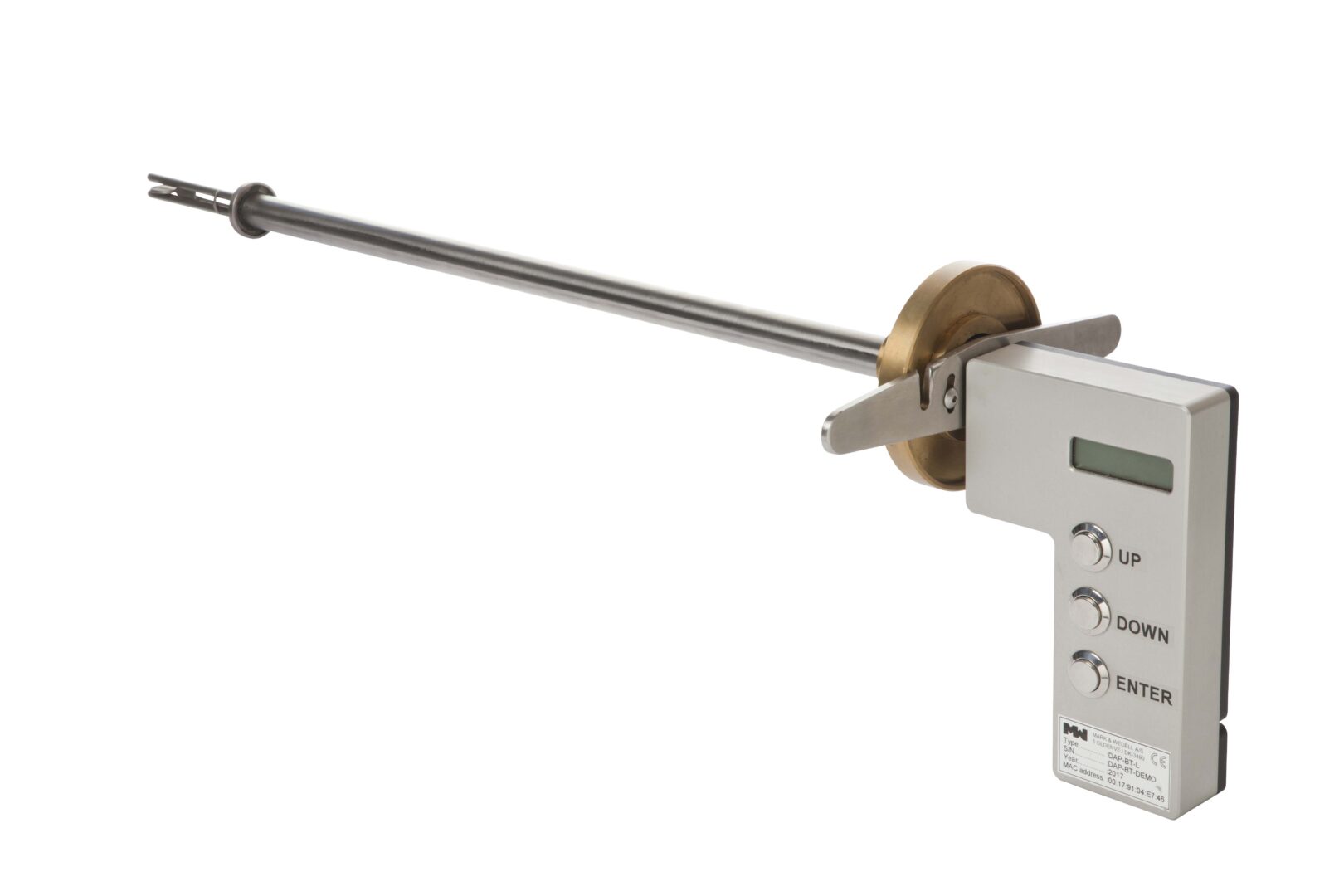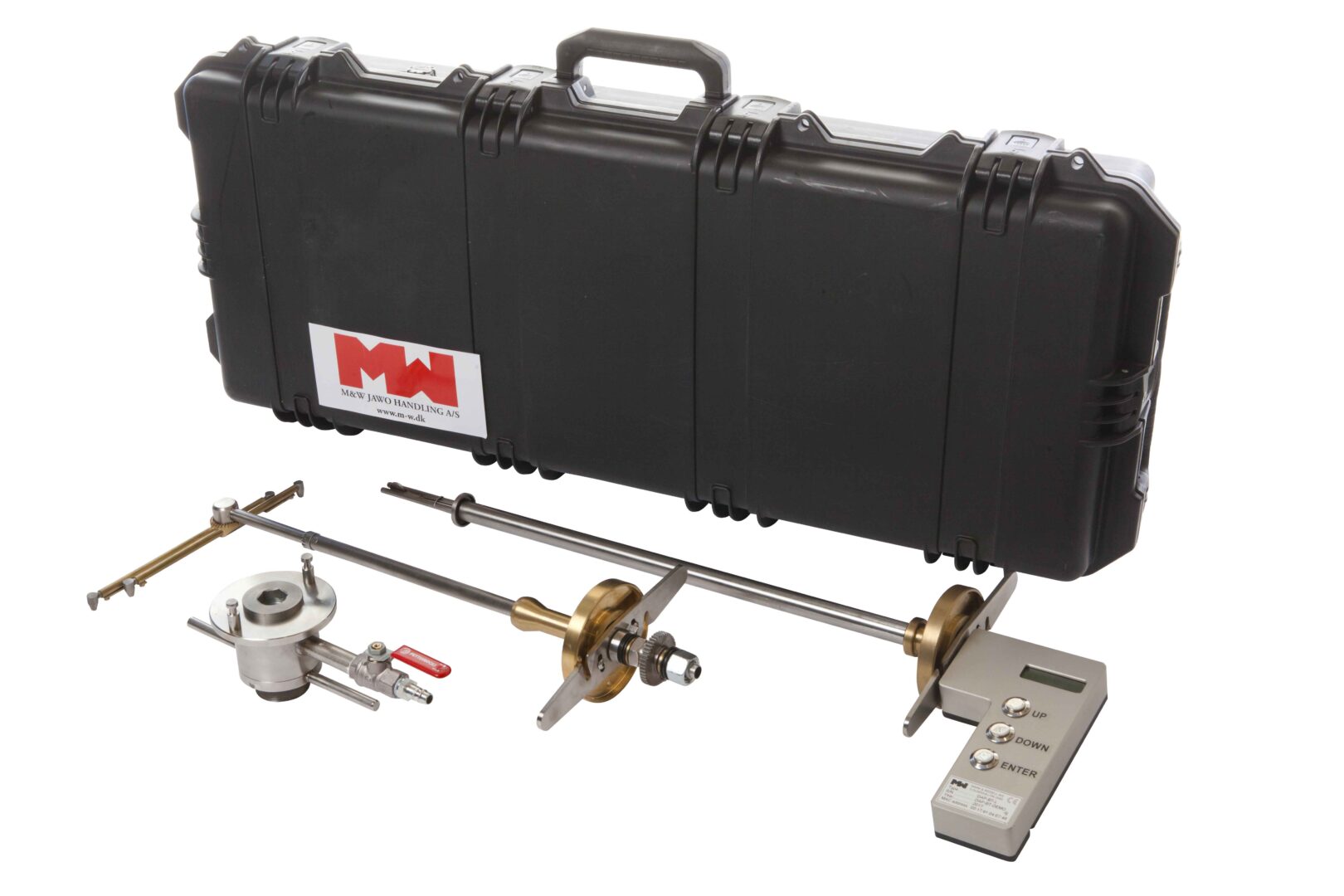Dirty Air Pitot Laser (DAPL).
What’s the benefit?
The Dirty Air Pitot Laser (DAPL):
- The DAPL establishes the flow velocity in pipes/ducts and provides operator with data to balance flows and avoid particle drop-outs due to low flow velocity
- For power plants: Provides the operator with information to optimise the combustion process, thus reducing emissions and fuel consumption
- Can be used as a stand-alone unit and in numerous pipes
- Is a cost efficient and a portable equipment which is easy to use and fast to install espicially in the Snap Lock version.
- When used together with the PFSA, the data is automatically transferred to the control unit via Bluetooth.
What does it do?
The Dirty Air Pitot Laser (DAPL) is a portable instrument designed to measure the flow-velocity, temperature and dynamic pressure in pipes or duct systems which pneumatically transport a mixture of air and particles such as pulverized coal or biomass, cement, lime, or other particles of similar size.
The DAPL can work as a stand-alone unit and provide data to the operator or alternatively in combination with the M&W PFS or PFSA to ensure optimal measurements.
Furthermore, the DAPL can transfer the data to the PFSA via Bluetooth.
How does it do it?
The DAPL is inserted into the pipe through a Dustless Connection (DuC). The DAPL is outfitted with a laser distance indicator, which is needed in order to obtain data for the full flow-velocity profile of the pipe. When Bluetooth technology is installed in the corresponding PFS/PFSA data can be transferred via Bluetooth and thus several manual tasks are eliminated.
The data produced can be used independently or in combination with the M&W PFS or PFSA enabling isokinetic sampling of the fuel pipe.
When the DAPL is inserted into the pipe, it is positioned all the way into the pipe, and slowly dragged out while performing the measurements. The DAPL measures the pressure difference between the upstream and downstream face of the probe. The downstream pressure corresponds to the static pressure and the upstream pressure corresponds to the stagnation pressure of the flow. The difference between these pressures can be used to estimate the flow-velocity.
By performing measurements across the full cross-section of the pipe, the full flow-velocity profile can be obtained. The DAPL has distance indicators, which allow the operator to manually read the measurements.
What are the technical details?
The DAPL is inserted into the fuel pipe using the Snap-Lock method. It is positioned all the way into the fuel pipe, and slowly dragged out while it is performing measurements. The results are used to calculate the flow velocity profile for the whole fuel pipe. The laser is used to determine very precisely the relative position of the probe inside the fuel pipe.
Application: Gas velocity / differential pressure and temperature measurement
Instrumentation: Digital manometer / thermometer
Pipe dimension: < 2000 mm diameter
Power supply: 9V battery
Operation temp.: Max 100C
Material: Stainless steel / aluminium / brass
Weight: 4 kg
Humidity: 0 – 95% (no condensing)
Compressed air req.: Min. 6 bar clean and oil-free air
Accessories: DuC/DuC-SL
Options
The DAPL can be delivered with a Dust Connection (DuC) or a Dust Connection Snap Lock (DuC-SL). This technology has been developed by M&W in order to save time and provide an easy way to secure a connection between the pipe and measuring instrument. The design enables insertion of the measuring instrument into the pipe with internal over-pressure which reduces leakage of dust and provides a gas tight sealing.


